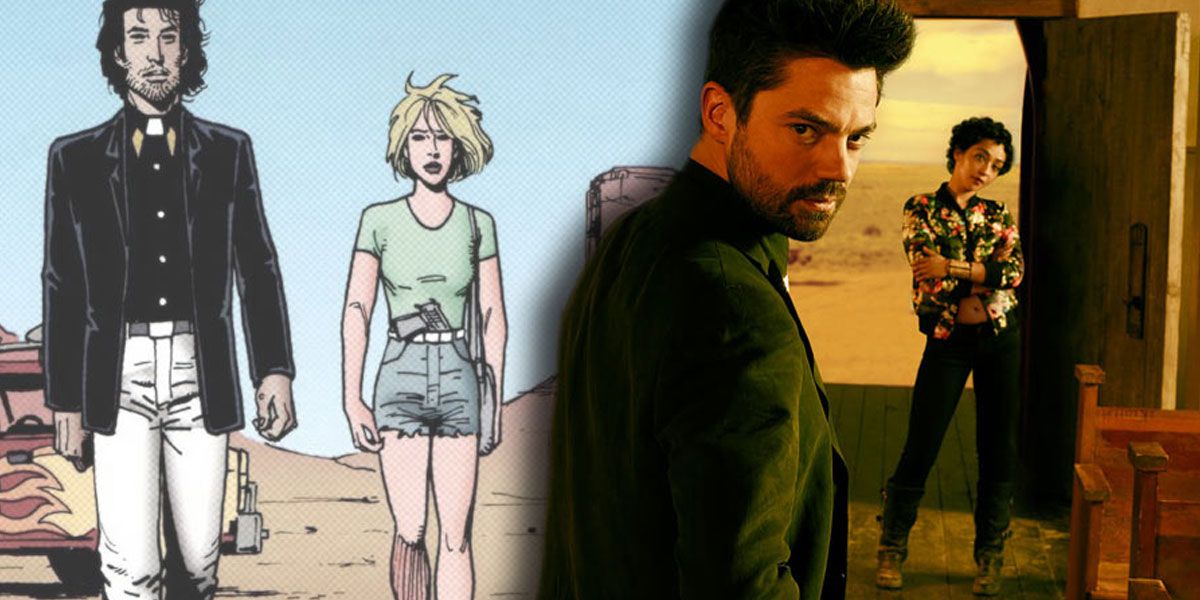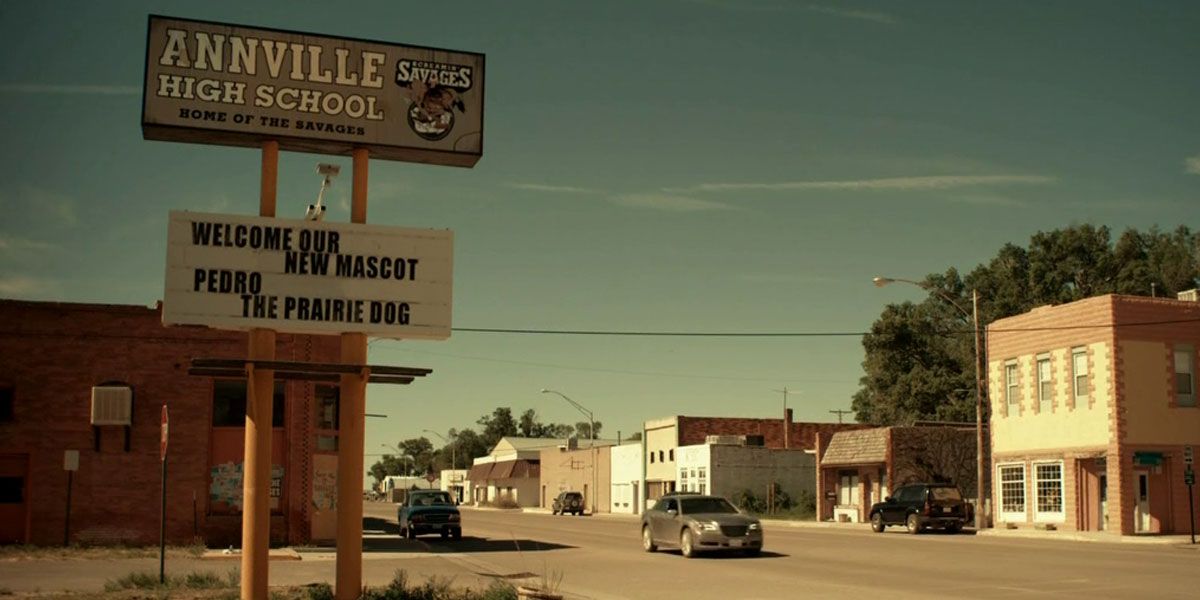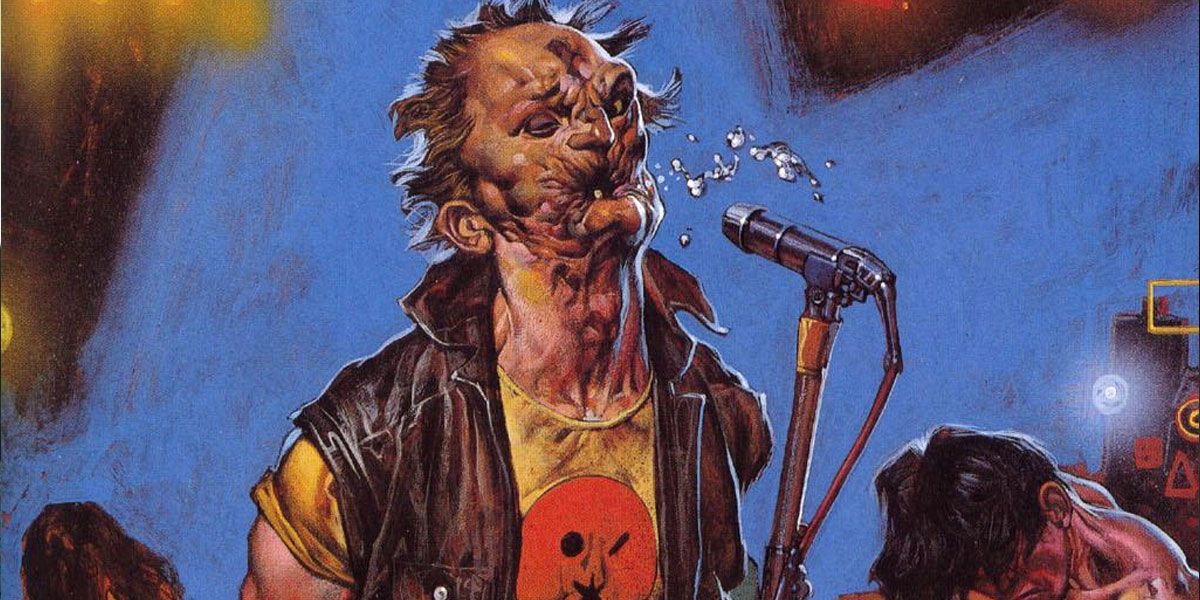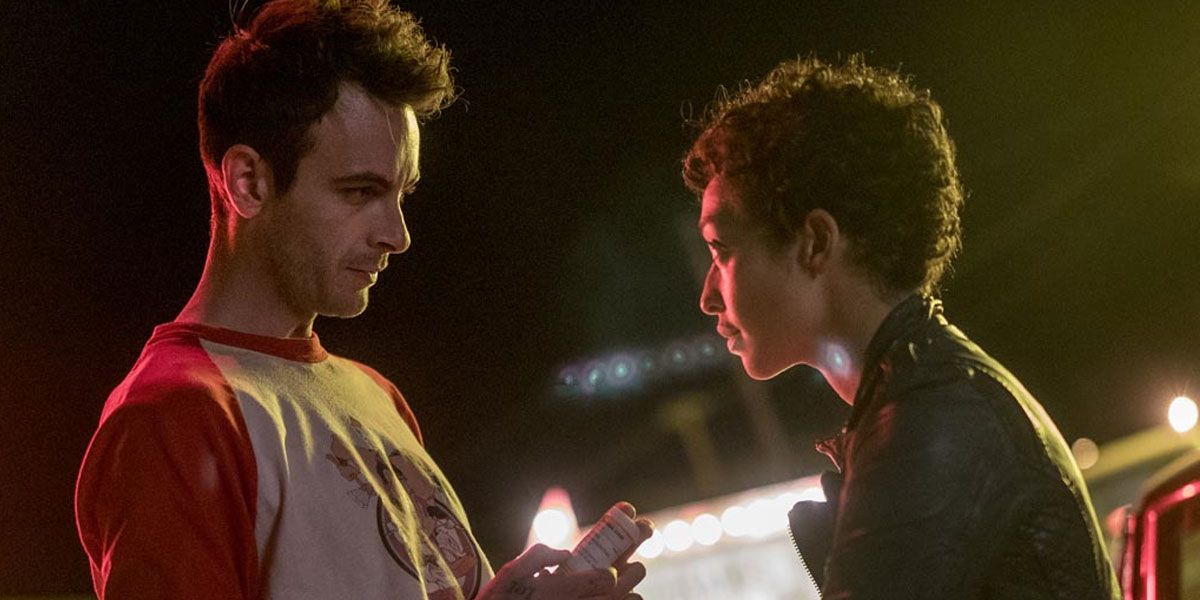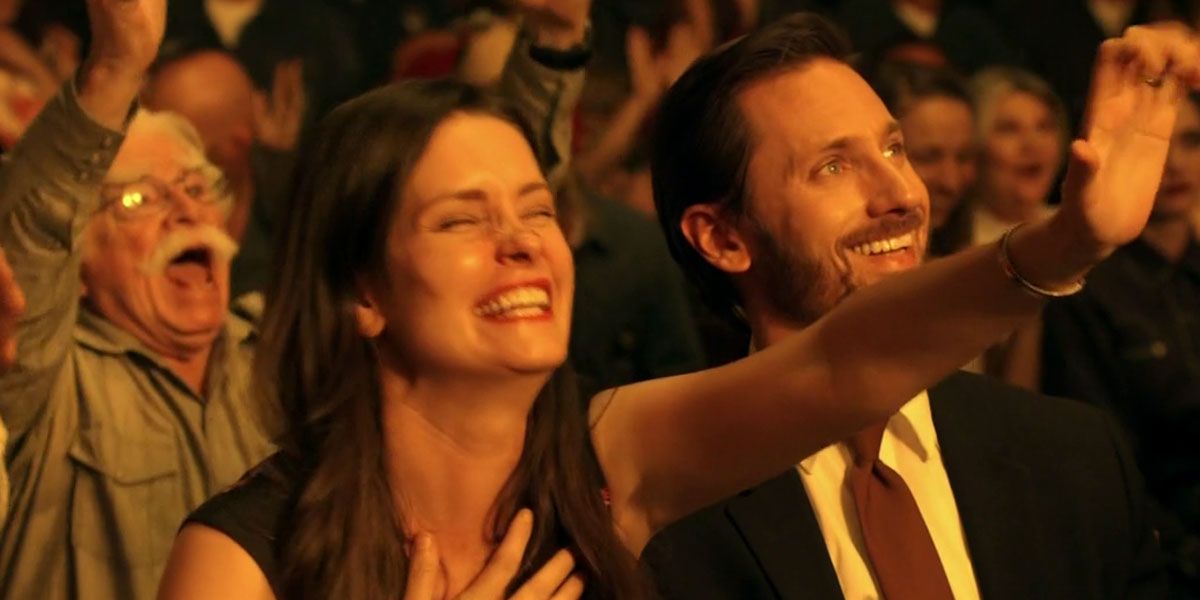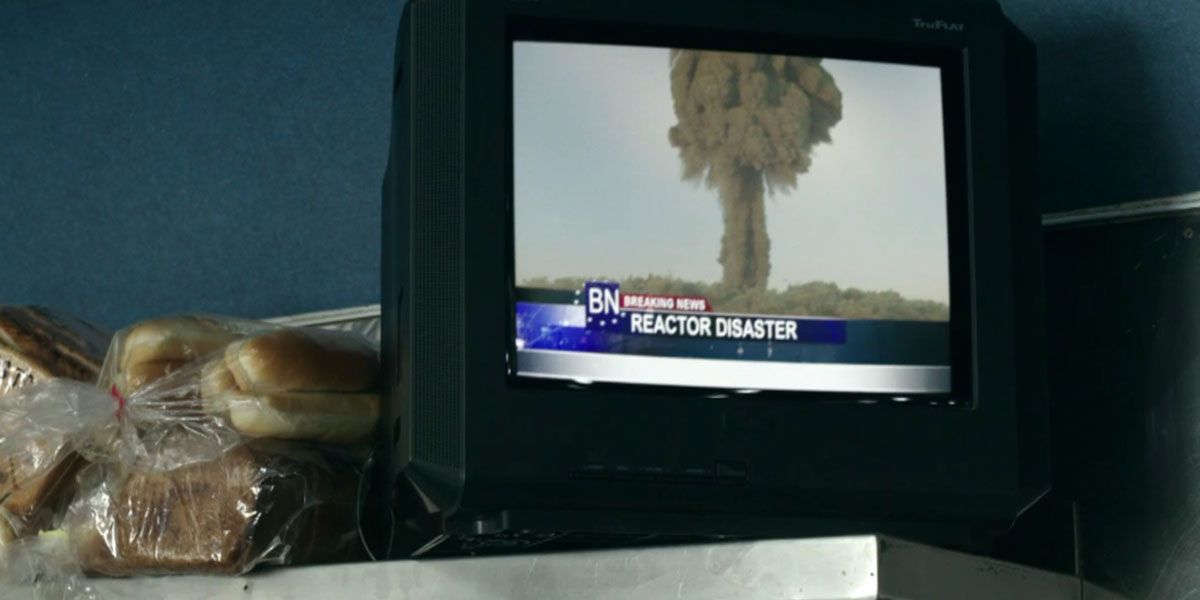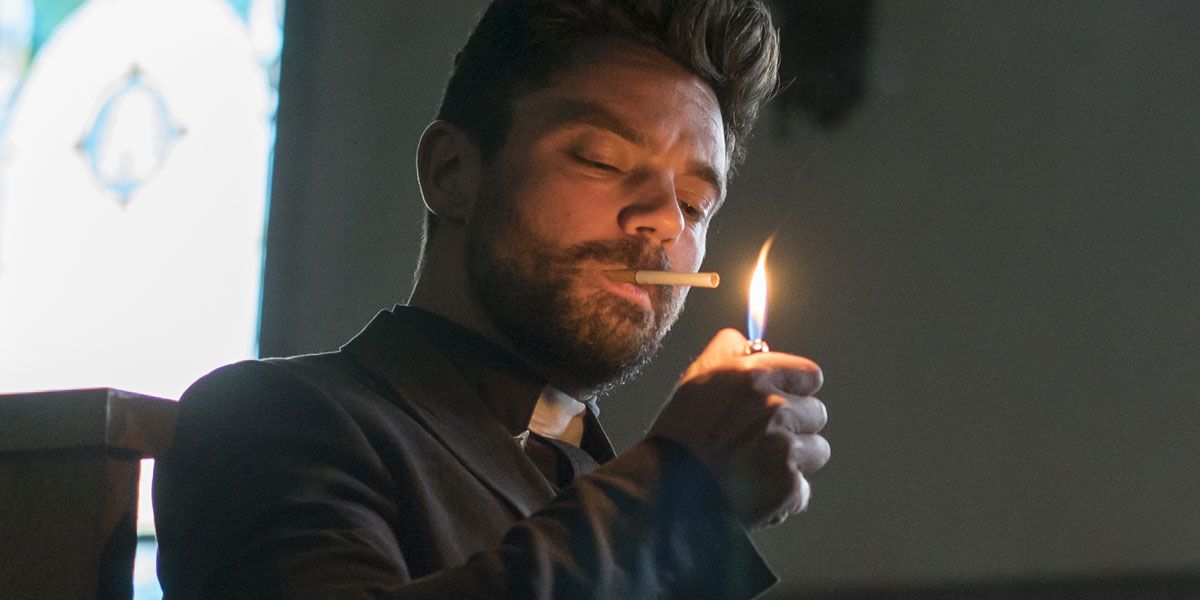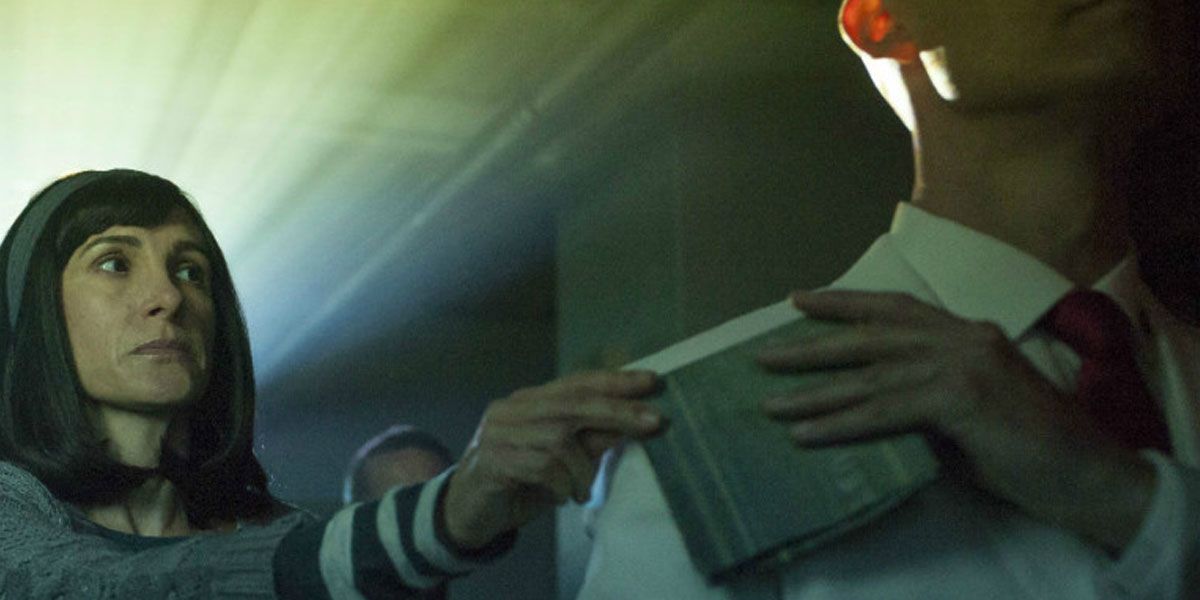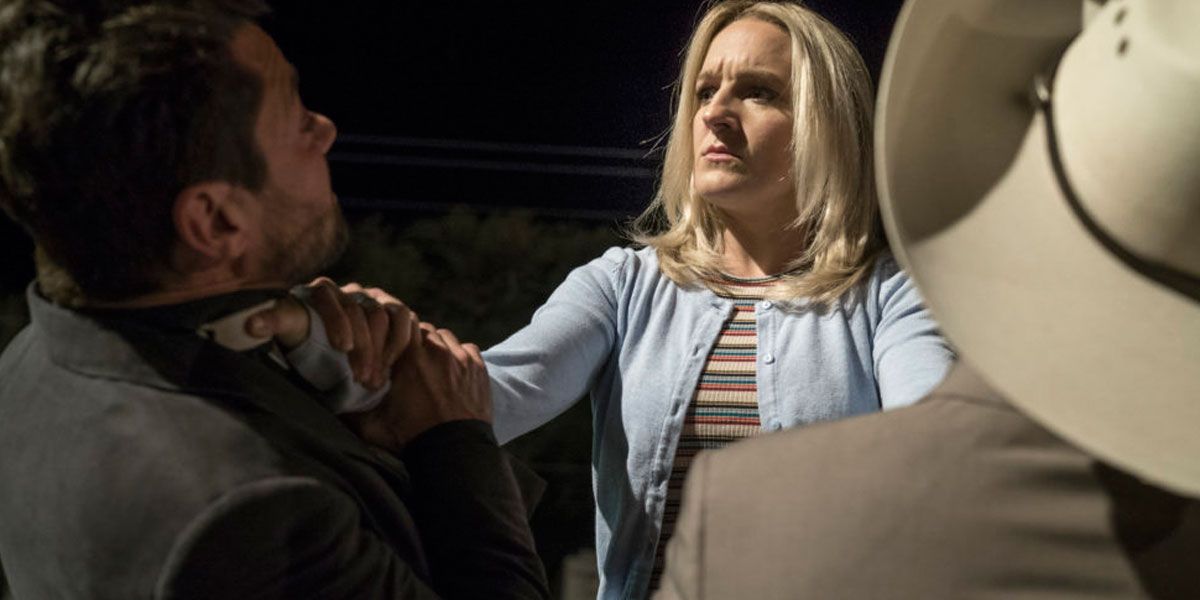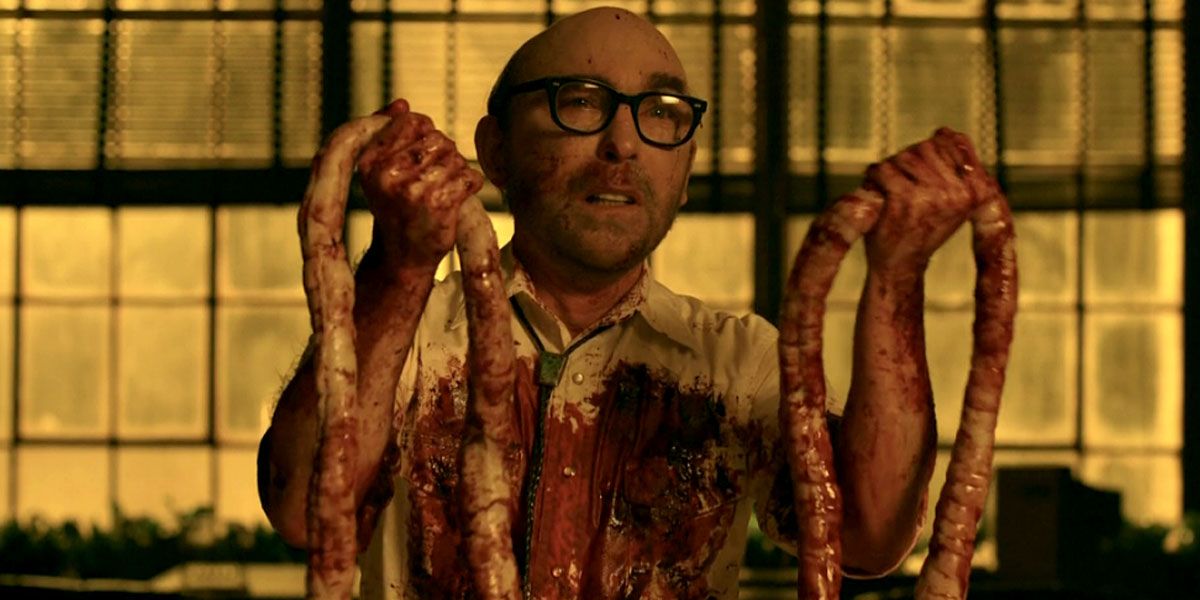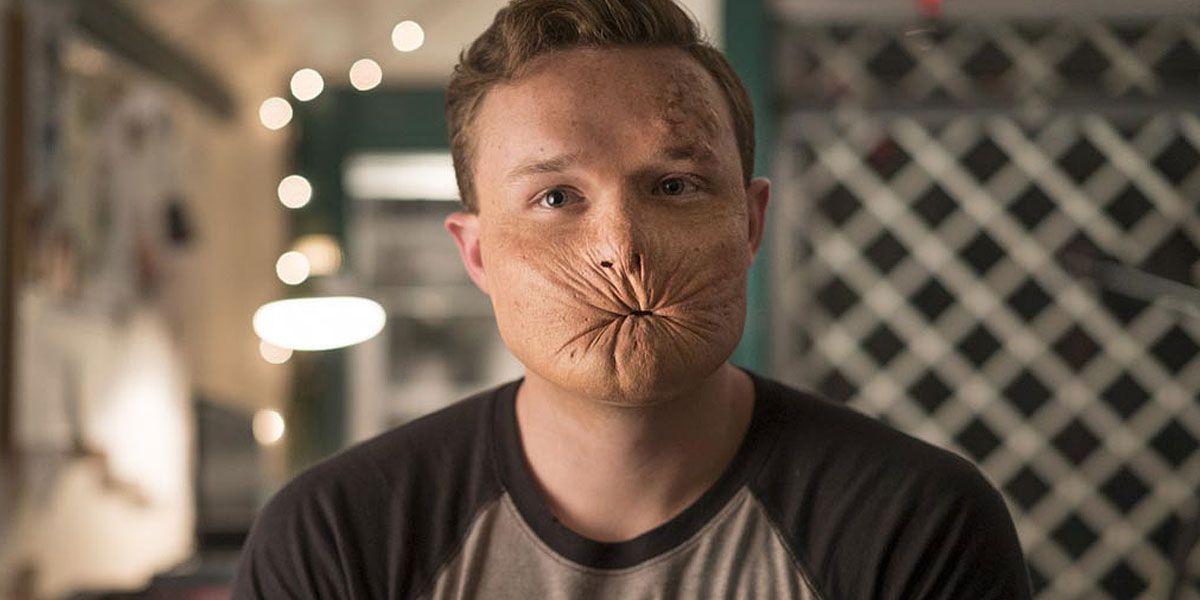SPOILER WARNING: Major spoilers from the entire first season of AMC's "Preacher" (and the Vertigo comic book series it's adapted from) follow.
Anyone who's followed our "Preacher" recaps over the show's first season knows that we're huge fans. And that's not usually the case with a comic-book adaptation that takes such huge liberties with its source material. But "Preacher" has proven to be that rare page-to-screen work that makes alterations for all the right reasons -- to further develop the characters; to heighten the stakes; to make the story better; we could go on and on and on.
So what exactly did the show's creators Seth Rogen, Evan Goldberg and Sam Catlin change from Garth Ennis and Steve Dillon's revered Vertigo series? Quite a lot, actually. We've picked 10 of the most notable adjustments, including one that, unlike the other nine, could possibly hinder the show in the future.
Keep in mind, this list is by no means exhaustive, so let us know if you think we missed anything major in the comments!
10 Combining the Towns of Annville & Salvation
Much like the show, the "Preacher" comic's story starts off in Jesse Custer's hometown of Annville, and eventually moves to Salvation, where he meets the likes of meat mogul Odin Quincannon and a roster of other colorfully unsavory characters. While this is in line with the series' road-trip trappings, there's also no denying how similar the two communities are to one another.
Perhaps realizing this, the AMC series combined both jerkwater Texas towns into a single jerkwater Texas town -- before blowing it all to shit (Literally! See no. 6 on this list). Of course, that's not to say the live-action "Preacher" won't visit Salvation at some point down the line, but if it does make a stop in the backwater town, it will be for a purpose other than introducing Odin, which has already happened. That's a huge testament to how economic the show is with its storytelling.
9 Taking the Story Out of the '90s
As one of the most influential comic books of its time, "Preacher" has a much-deserved legacy, but when rereading its trades, there's no denying that some of the imagery and stories do feel a little dated. Now, this is not necessarily a bad thing -- it now reads like an aggressively dark period piece -- but it makes sense that the show's creators would want to place it in a modern setting to make it a little more relatable to a new audience.
Eugene/Arseface is the character most affected by this change in eras, as his attempted suicide is no longer fueled by the death of Kurt Cobain. Could that have been just as effective as his current, even darker backstory (see the recap of "El Valero" for details)? Perhaps. But giving the Nirvana frontman such a prominent presence on the television show would have only further reinforced an unwanted time-capsule aesthetic.
8 Front-loading Cassidy and Tulip's Relationship
One of the darkest moments in the comic happens when, mistakenly thinking Jesse is dead, Tulip starts using heroin and sleeping with Cassidy. It's more of a lecherous, predatory move on Cassidy's part than an honest-to-God relationship, to be honest, which makes it all the harder to stomach, especially given how much readers had come to care about both characters at this point in the series.
The show smartly alleviated some of that by having the two characters get together early on. While their union is passionless on Tulip's end, and still happens when she's at a low point, the addiction factor and Jesse's supposed death have both been taken out of the equation. Plus, Cassidy and Tulip are at this point unaware of each other's relationships with Jesse, removing the betrayal aspect from the storytelling equation, or at least significantly altering its dynamic. In addition to making the whole thing a lot less gross, it also plants the seeds of romantic tension between the three main characters down the long road ahead.
7 Adding Lots -- and Lots -- of Characters to Annville...
Almost of half of "Preacher's" cast consists of characters who weren't even in the comic. There's Odin's henchman, Donnie, and his masochistic wife Betsy, both of whome play pivotal roles in the show's freshman season.
Then there's the church organist and bookkeeper, Emily. Her personality ends up getting the most developed throughout the season, as she harbors unrequited romantic feelings for Jesse, but settles for a lukewarm affair with Annville's eager-to-please yet sympathetic mayor, Miles Person. Their arc takes a truly dark turn, when Emily -- realizing Miles means nothing to her -- leads him to the fangs of Cassidy, who's still rebuilding his strength after self-immolating in the sun. All of these storylines reek of wood rotting beneath the veneer, thus transforming the show's first season into a narrative akin to "The Last Picture Show" -- but with more vampires, murderous angels and absentee deities.
6 ...And Then Killing Them All
This is the one change on our list we're earmarking as potentially having a negative impact on the series. "Preacher" introduced all these fantastic new characters, only to apparently kill them in the methane blast of the finale. To be fair, many of them could have somehow survived (save for Mayor Persons and Betsy, whose severed legs we see in the rubble), but it doesn't seem likely.
On one hand, the town's residents helped add more complexity to the arcs of the still-living characters from the comics. On the other hand, their quick disposal may make the first season feel a bit cruel and inconsequential, depending on how the subsequent seasons shake out. It's too early to say, but regardless of what happens, there's no denying that the finale was excellent as a standalone episode of television. And even if most of Annville is dead, then at least we still have a season-long, macabre take on a Robert Altman film to look back on.
5 Turning Jesse Into Kind Of an Asshole
Even in the comic, Jesse Custer has some deep, deep flaws; he's lived a life of crime with Tulip, and is prone to letting his rage get the best of him when using his Genesis power. But he's by no means a bad person. The show, however, truly makes you question his morality. As he begins to realize the nature of his newfound abilities, Jesse develops a God complex about himself, turning to his voice to swiftly change peoples' lives rather than putting in the work to save them through listening, providing comfort, and offering advice per his chosen vocation. When Eugene points this out, Jesse gets so mad at the teenager that he sends him to Hell -- literally. All of this makes for higher stakes and a more complex character, especially when Jesse tries to right his wrongs in the back half of the season and prepares to take on God face to face.
4 Keeping the Main Villains on the Periphery
Before "Preacher" even aired, fans were champing at the bit to see what the comic's two main antagonists -- The Saint of Killers and Herr Starr -- would look like. By the end of the first season, audiences received a full view of the former, along with his blood-soaked backstory. But for Starr, we only have one brief scene with him in an underground screening room, watching a snuff film. We see just part of his face, and when he walks away, we only know it's him because he puts on his signature white Stetson hat.
In the case of both The Saint and Starr, the show's writers made a very conscious decision to mostly show their scenes in the episodes' cold opens, keeping them entirely separate from the rest of the narrative. And with every episode where they loom over the story instead of becoming directly involved with it, their presence only becomes more foreboding -- the same tactic used for The Cousins in "Breaking Bad." It's only in the final two episodes that The Saint begins to play a bigger role, after DeBlanc and Fiore come to retrieve him out of Hell. And in the ultimate money shot of the series so far, the very last thing we see in the finale is The Saint gunning down the Seraphim.
Speaking of which...
3 Adding A Badass Seraphim
In the comic, one of Genesis' parents is a Seraphim angel, who pops up later in the story in a prominent role. We haven't seen that particular holy figure or the demon he coupled with yet, but we are introduced to another Seraphim who comes to Annville with the intent of putting a stop to fellow angels DeBlanc and Fiore's off-the-reservation mission to re-capture the escaped Genesis.
This results in a turbulent motel fight where the three angels keep getting killed and resurrected. It's arguably the best sequence in the series to date, perhaps one of the best action sequenced ever filmed for telvision, packed with stylish yet simple camerawork, loads of gore, and a whole lot of black comedy. Rewatching the scene makes us sad this new Seraphim is gone, to be honest. Then again, there are probably plenty more angelic badasses where she came from.
2 Transforming Odin Quincannon's Meat Woman Into A Sympathetic Moment
Before "Preacher" premiered, we included Odin's meat woman on our list of 10 "Preacher" Comic Book Scenes Too Disturbing For Television. Lo and behold, the show proved us wrong... sort of.
When Jesse's congregation discovers that God has abandoned Heaven, they all act out with varying degrees of insanity. For Odin, that means trying to recreate his dead daughter out of ground chuck from one of his slaughterhouses. As disgusting as it is to see him cradling a tiny ski jacket and pants stuffed with raw meat, it's also somewhat heartbreaking. Unlike the Odin of the comics, this man is not a total monster, his soul having crumbled only after his entire family was killed in a ski-lift accident. Even if you don't condone his murderous impulses (and you shouldn't), you can't help but feel for him. That makes the alteration to the meat-woman storyline the epitome of why "Preacher" has proven to be a great approach to adapting source comics to television. It takes the comic's more repulsive moments and figures out how to use them for both shock value and character development.
1 Sending Eugene to Hell -- Literally
Consider this the series' ace in the hole. Everyone in Annville may be dead, but by keeping Eugene confined to the underworld going into the second season, the show gives Jesse something to fight for outside of his greater mission. After all, he's the one who sent Eugene to Hell in the first place. And he feels horrible about it.
That's a far cry from the comic, where Eugene and Jesse meet after the latter uses Genesis to make Sheriff Root literally go fuck himself. Seeking vengeance, Eugene tracks down the preacher, only to eventually befriend him. Of course, things likely won't go so smoothly for the two of them this time around. First, Jesse actually has to find Eugene, and even then, who knows what state he'll be in? Will he be able to actually forgive Jesse for being so unnecessarily angry with the only person who's ever been honest to him? All of these unanswered questions make Jesse's banishment of Eugene such a generous storyline. It opens doors for Season 2 to be horrific, darkly funny, and morally complex, just like Season 1 and the comic that came before it -- if not even more so.

